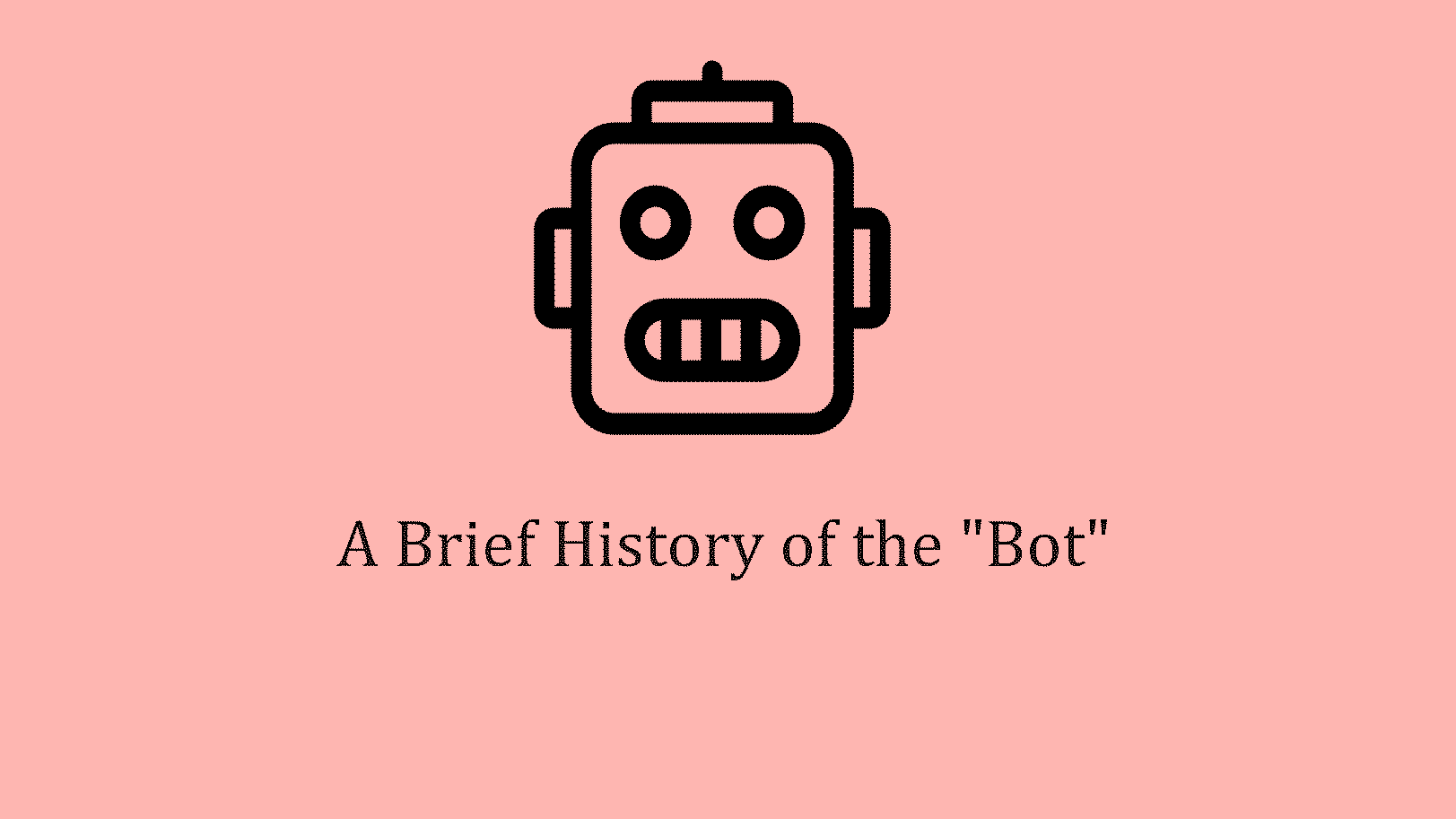Updated: 14 June 2021
Internet Relay Chat (IRC) was developed and first initiated by Jarkko Oikarinen to take the place of the MultiUser Talk (MUT) program utilised by Finland’s University of Oulu in the late 1980’s. Nobody realised the extent to which it would grow. What follows is a brief history of the “bot”.
ELIZA
There is no accurate answer as to when IRC began incorporating the use of the ChatBot. A section was rumoured to have been created in 1992 to begin investigating the use of AI bots on the medium. In 1994, Joseph Weizenbaum of MIT in Massachusetts developed “ELIZA”, who was designed to recognize key words and phrases in text to generate open-ended questions in response. The development of “ELIZA” is considered to have instigated the word “ChatterBot”, although “ELIZA” itself never appeared on IRC.
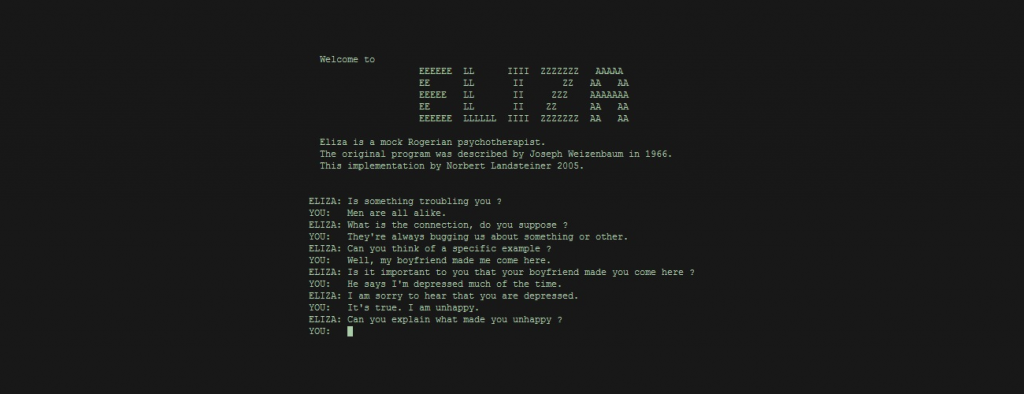
Puppe, Game Manager & Bartender
The first IRC bots are generally recognised as being Jyrki Alakuijala‘s “Puppe”, Greg Lindahl‘s “Game Manager” and Bill Wisner‘s “Bartender”. They all surfaced on IRC in the early to mid 1990’s and were designed to maintain a presence in otherwise-empty channels, while also providing basic automated responses when required.

Malicious Bots
By 1998 bots on IRC were more of a rule than an exception, with most channels using them. This encouraged development of their capabilities and also, on occasion, a sinister side to their design. The worm, “Pretty Park”, is one of the original malicious bots on IRC, designed to infiltrate users’ computers and attack them. Certain readers might wonder about the initial omission of mentioning the infamous trojan “Sub7”, but it is worth remembering that it was actually a malicious .EXE file sent over IRC to infect computers and not actually a bot. It does, however, remind us that bots weren’t the only way of inflicting harm in those early days of IRC.
“Gtbot” first appeared on IRC in 2000 as a fake mIRC client program, and was responsible for some of the first denial of service attacks. “Gtbot”, and similar others, served as inspiration for many attacks prevalent outside of IRC today, such as ransomware and information theft.
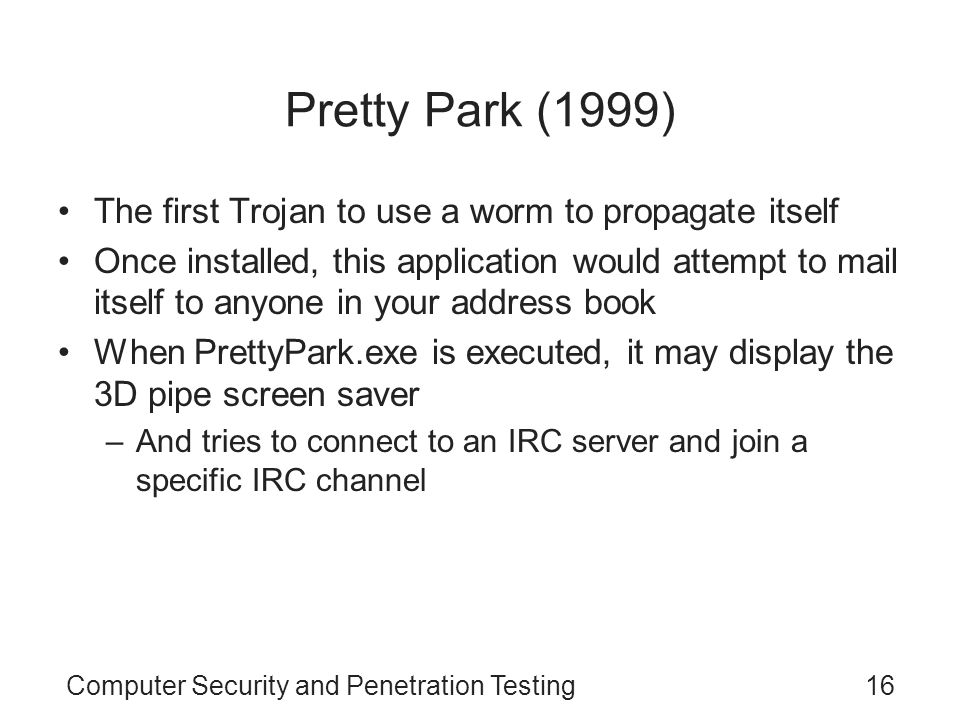
Webcrawler & GoogleBot
Outside of IRC, bots also became more of a presence. In 1994 “Webcrawler” was created to index web pages, first being used by AOL in 1995 and later by Excite in 1997. In 1996 “Backrub” was used for the same reason, later becoming “GoogleBot”, the most famous bot used for this function.
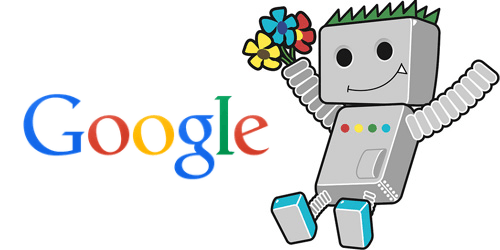
A.L.I.C.E.
“A.L.I.C.E.” (Artificial Linguistic Internet Computer Entity), later “ALICEBot” or simply “ALICE”, was devised by Richard Wallace in 1995, inspired by Weizenbaum’s “ELIZA”. In 1998, “ALICE” was rewritten in Java, using an XML schema called AIML (Artificial Intelligence Markup Language) for specifying heuristic conversation rules. Director Spike Jonze mentioned “ALICE” as being the inspiration for his 2013 Academy Award-winning film, “Her”, starring Joaquin Phoenix.
“ALICE” is now an open-source bot, with hundreds of contributors still creating hundreds of thousands of lines of AIML to introduce into conversation, hence allowing “ALICE” to replicate a person in general terms rather than being limited to therapist-type responses like “ELIZA” before it.
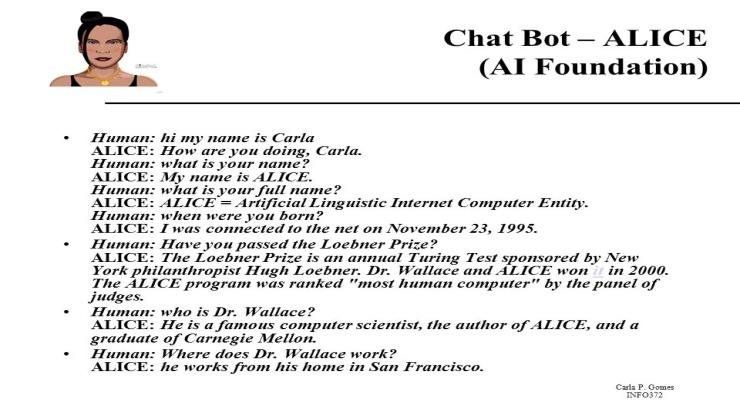
Storm
“Storm” first appeared in 2007. It is estimated that this botnet has infected in the region of 50,000,000 computers and been involved in crimes including identity theft and stock price fraud.

(Image: arsTECHNICA)
Siri
2011 saw the advent of “Siri”, Apple Inc‘s virtual assistant. “Siri” makes use of voice queries, gesture-based control, focus tracking and a natural-language user interface to make recommendations, answer questions and perform actions by assigning requests to various internet services. Amazon‘s “Alexa” and Microsoft‘s “Cortana” followed within a few years. “Siri” has faced criticism for a lack of innovation since its introduction, needing improvements in recognising English spoken with an accent, while too often getting questions wrong and, instead of answering, showing a website result instead. This criticism prompted Apple to build a new AI service, called “Viv”, in 2017.
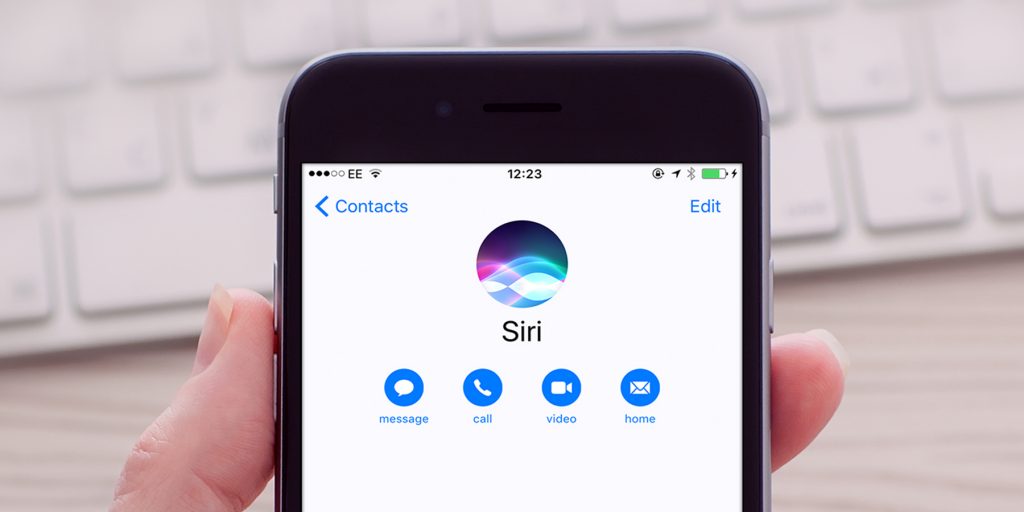
ContentBot
The most notable recent developments in AI bot technology (we’d like to think), are AI content generators like ContentBot. Utilised more and more frequently on websites, content generators provide the user with the important service of generating copy and content for use in business, marketing, copywriting among others. With an input of carefully-considered and researched features, these bots are designed to draw topical and up-to-date information from the internet and generate responses to given requests within seconds. This technology is designed to save the user time and creative effort, enabling an upsurge in sustainable productivity. ContentBot, specifically, is also being utilised to create short copy for platforms like Twitter and Facebook, and long form content for articles and blog posts. This indicates its effectiveness as a modern web tool and highlights the importance of its well-investigated features and topics by developers.
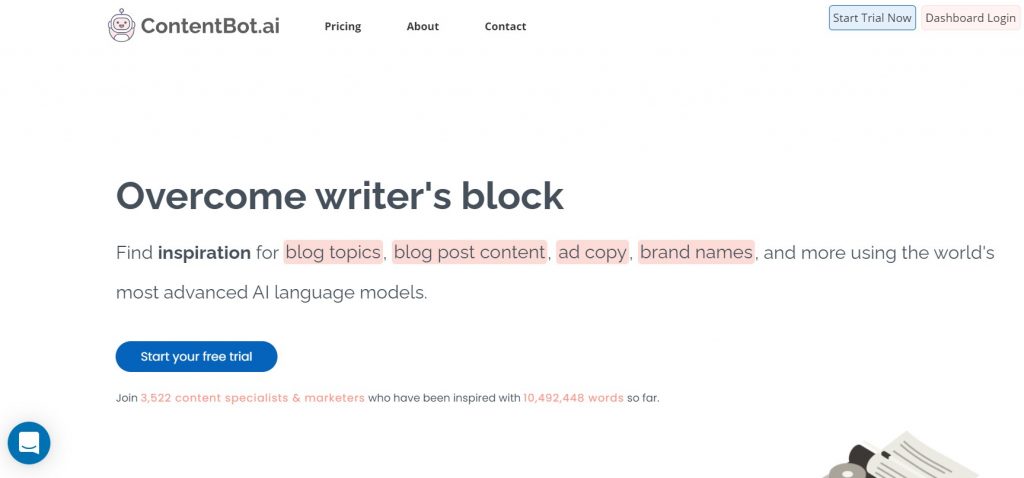
In Conclusion
Whatever your thoughts on modern technology, it cannot be denied that the “bot” has played an integral and sustained part in assisting computer developers (and now copywriters) in changing the face of the world as we’ve known it. Users are reaping the rewards of the artificially-intelligent progressions made in online technologies, while also enforcing the need to be more security conscious. We wait in anticipation to see in which direction the “bot” will take us in next.
- Technology and the future of books - July 29, 2021
- The benefits and importance of UX writing - July 29, 2021
- Use the science of music as a tool to enhance creative productivity - July 28, 2021
